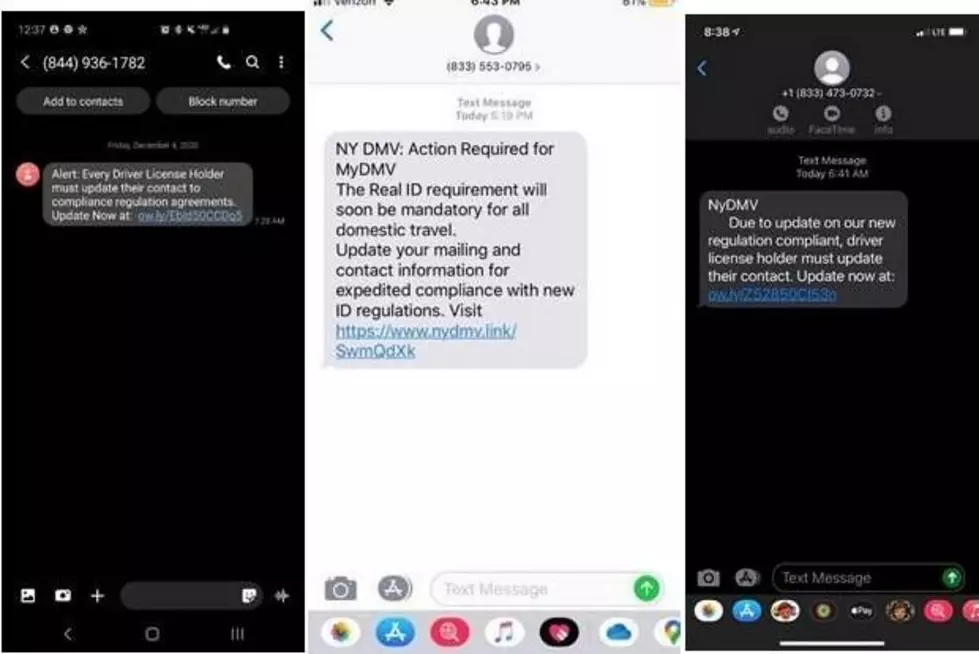
DMV Warns Drivers in New York About Scam That’s Fooling Residents
Officials are sounding the alarm about texts that appear to come from the New York State DMV.

The New York State Department of Motor Vehicles is warning New Yorkers of ongoing text message phishing schemes. These illegitimate text messages ask recipients to update their driver's license contact information and link to a phony DMV website, officials say.
"Anyone who received such a text message should not provide any personal data and should delete it right away. Phishing texts are fraudulent messages scammers use to obtain data or sensitive personal information. That information can be used to commit identity theft or trick the recipient into installing malicious software onto a computer or mobile device," the DMV said in a press release.
The following images are samples of the text messages sent:
"If you get a suspicious text asking for personal driver license information, DO NOT RESPOND. That text did not come from NYS DMV. You should delete it right away," the DMV said on Facebook.
- To help protect against phishing or smishing (SMS phishing) scams, the NYS Office of Information Technology Services (ITS) recommends the following precautions:
- Do exercise caution with all communications you receive, including those that appear to be from a trusted entity. Inspect the sender’s information to confirm the message was generated from a legitimate source.
- Do keep an eye out for telltale signs of phishing - poor spelling or grammar, the use of threats, the URL does not match that of the legitimate site. If the message does not feel right, chances are it is not.
- Don't click on links embedded in an unsolicited message from an unverified source.
- Don't send your personal information via text. Legitimate businesses will not ask users to send sensitive personal information through text message.
- Don't post sensitive information online. The less information you post, the less data you make available to a cybercriminal for use in developing a potential attack or scam.
KEEP READING: These are the top 6 scams connected to the pandemic
More From Big Frog 104









